Border+Lands
Statement
The work in this exhibition Border+Lands continue my interest in the relationship between the space of nature and human interventions into this space. Although this relationship between culture and nature suggests a more ubiquitous condition, these drawings use as a point of contact the lands west of Mildura to the South Australian border. The intersection of the human and natural spheres in this region are the mallee Wilderness zones of the Murray Sunset National Park and the cleared wheat farms of the Millewa. In 1880, Victorian Government surveyors first recorded this vast semi-arid land in the North-West Victoria opening the way for settlers to begin the clearing of Mallee, Murray Pine, Belah bush and native grasslands. The Millewa Scheme as it became known reached its zenith between 1923 and 1928 when an increase in settlement resulted in vast agricultural transformation of the area. The great experiment in dry land farming was over by the 1940’s when the Government established a relocation and compensation scheme to facilitate farmers to leave the land. This in no way underestimates the efforts of the farmers who have sustained their practices in the Millewa to this day. Border+Lands not only relates to the boundary or adjoining states and territories, but also the more contested ground that exists at the periphery of public/lease/freehold lands and the interrelated land use decisions that are made. This exhibition encompasses two bodies of work, The Millewa Suite and Relics. In the Millewa Suite, the natural world has been highly manipulated and modified by the epistemological and economic interests driven by science and agriculture. The marks in the earth caused by the cultivation of wheat retain an ambiguous beauty, mimicking that of nature. Even the artificiality of the wheat itself (a native of West Asia and the Mediterranean) with its verdant green shoots is incongruous against the red loam of the districts’ rich earth. The works hang in an unerring horizontal line, evoking the flat and un-differentiating wheat fields. In works titled Relics, discarded objects dot the same furrowed earth. They are humble objects that a assume the role as talisman. (Re’lic)n. 1. Part of holy person’s body or belongings kept after his/her death as an object of reverence; memento, souvenir. 2. (in pl.) dead body, remains of person; what has survived destruction or wasting, remnant, residue, scraps. 3. Surviving trace or memorial of a custom, belief, period, people, etc; object interesting because of age or association. Relics are a metaphor for human aspiration, failings and our desire to re-shape nature in order to re-define our relationship with it.
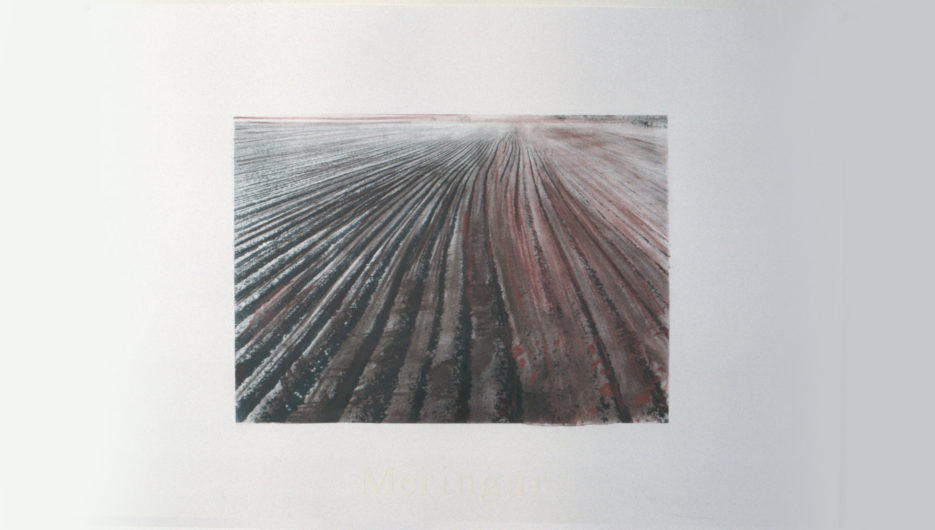
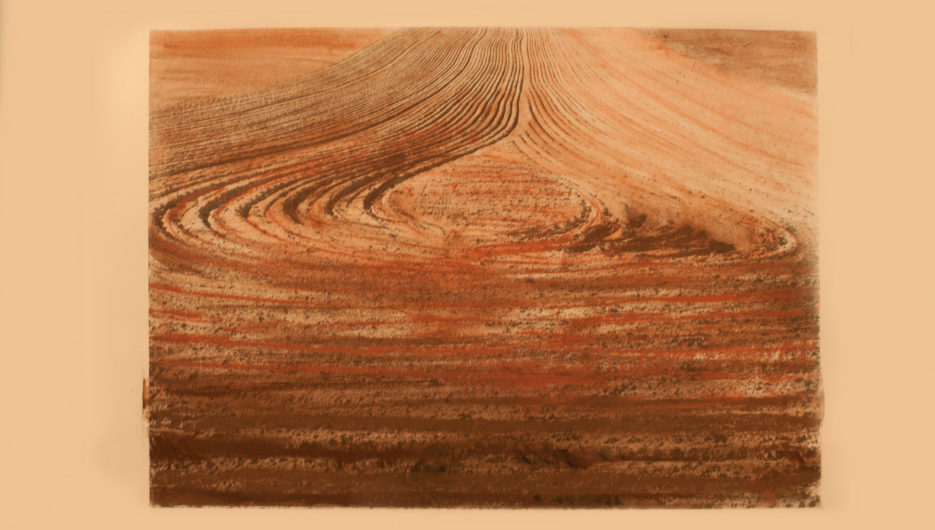
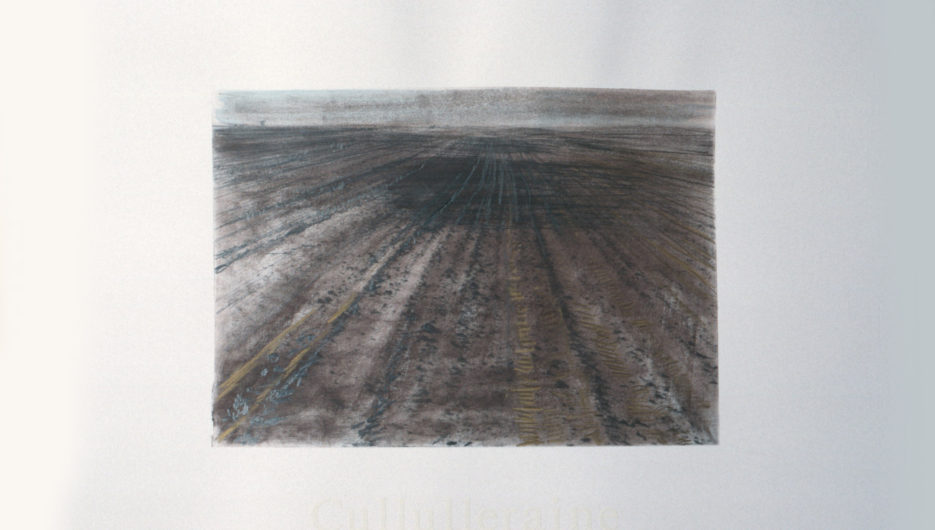
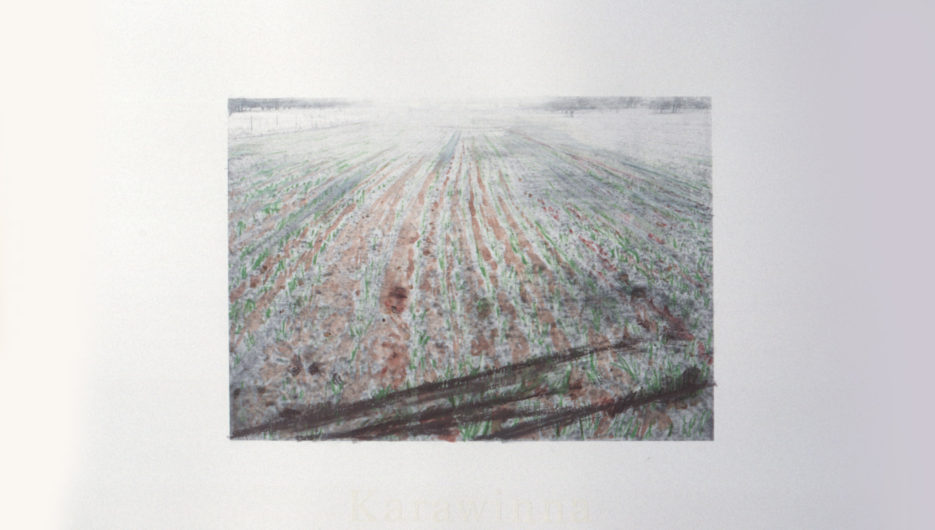
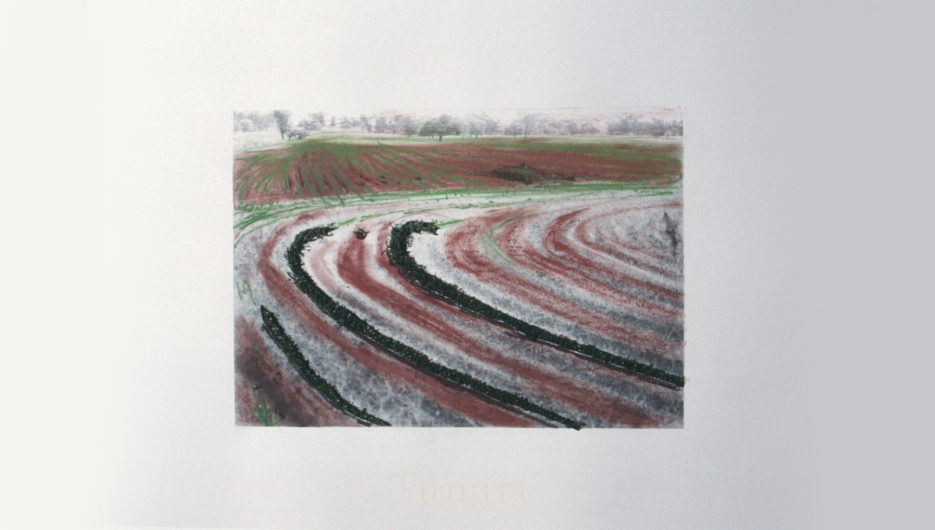
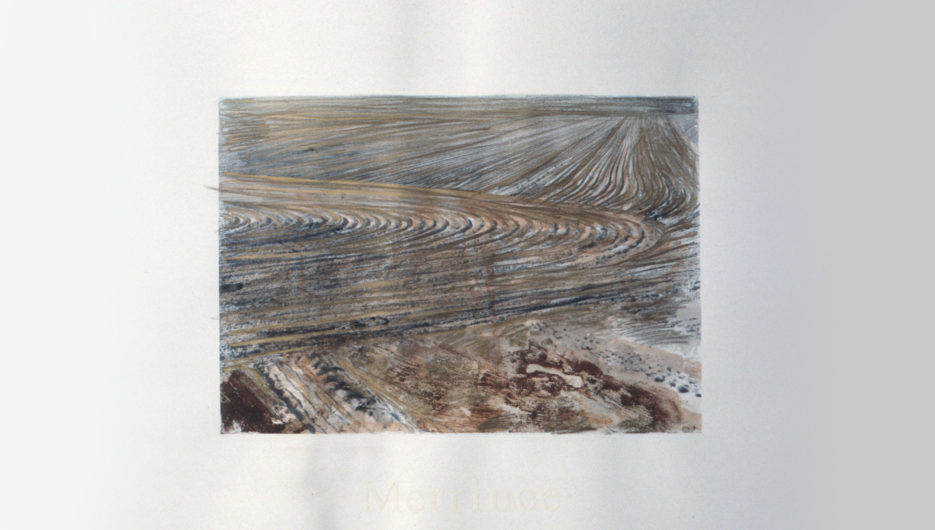
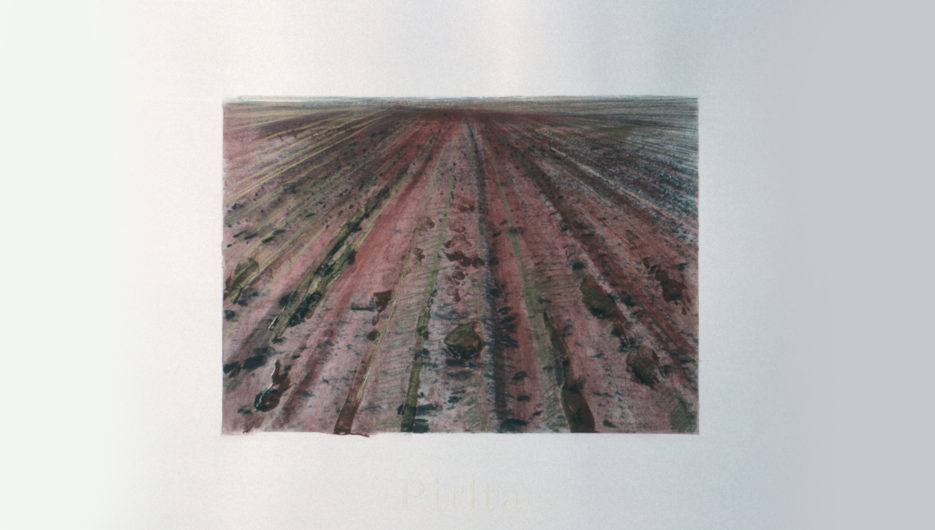
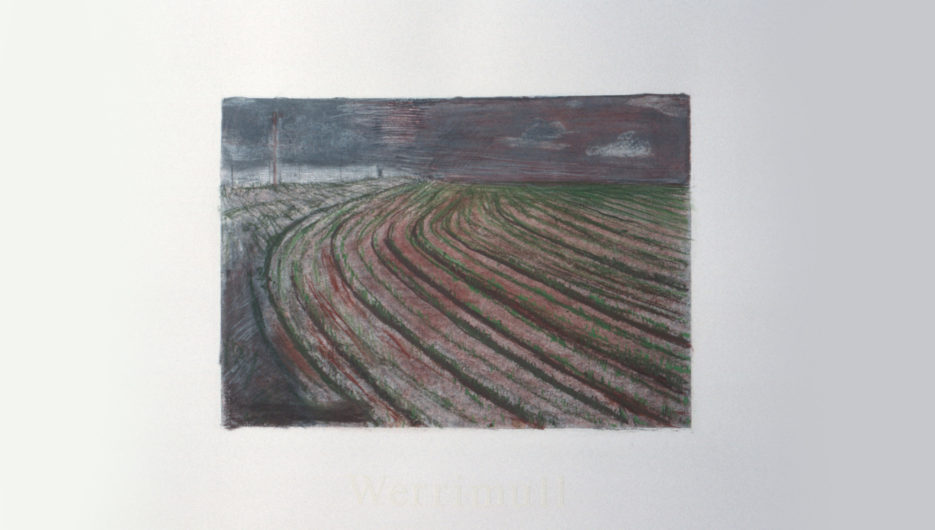

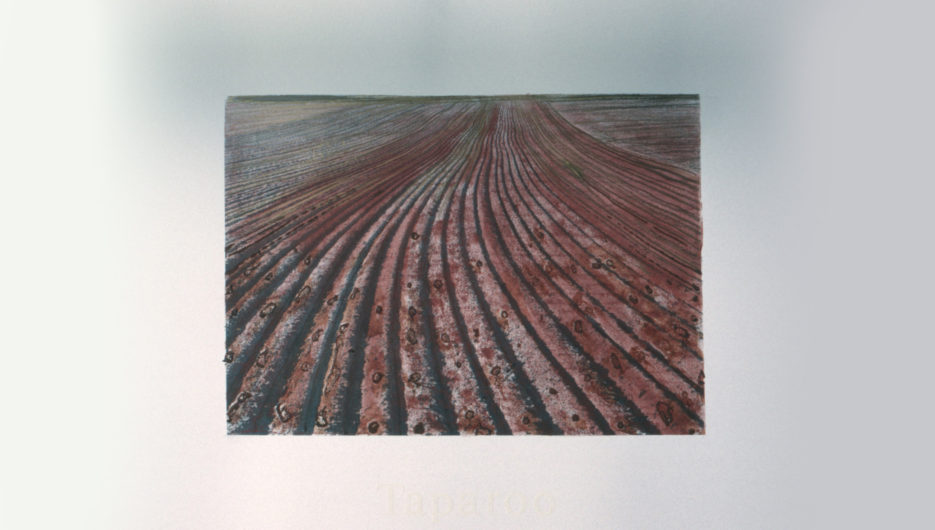
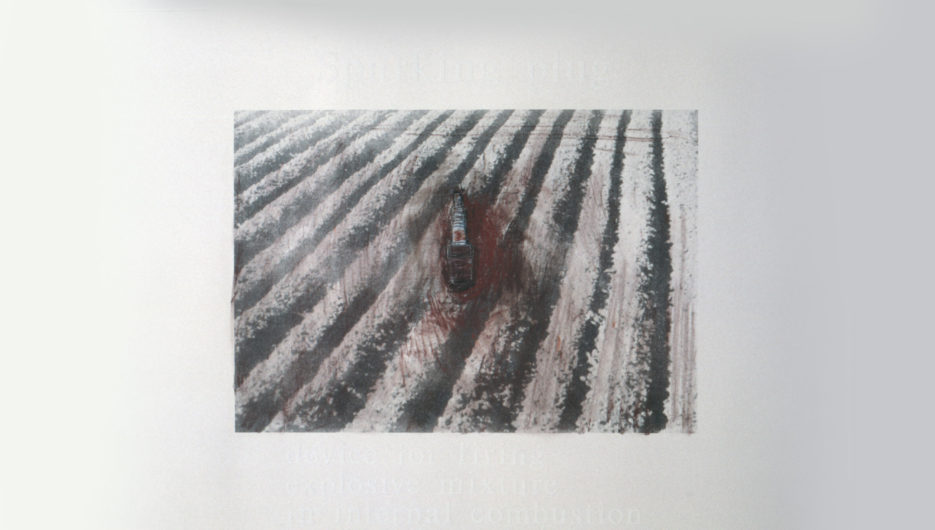
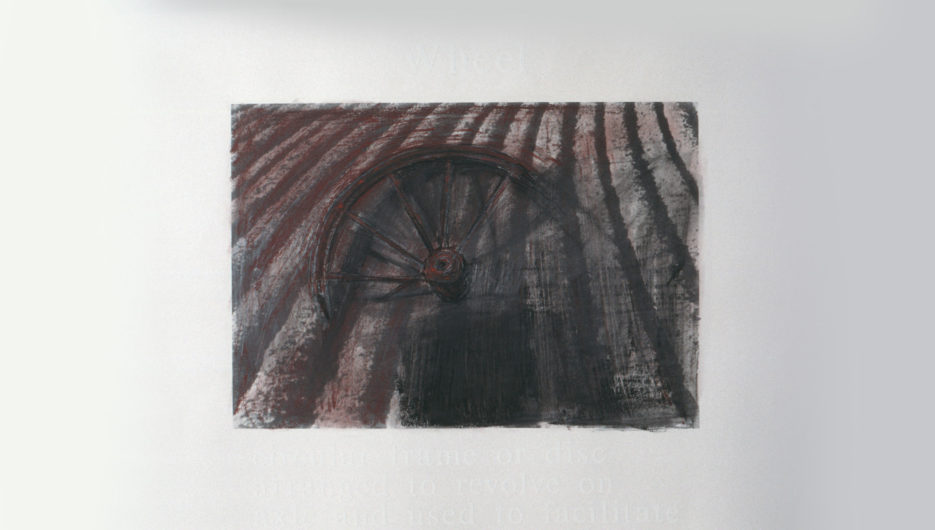
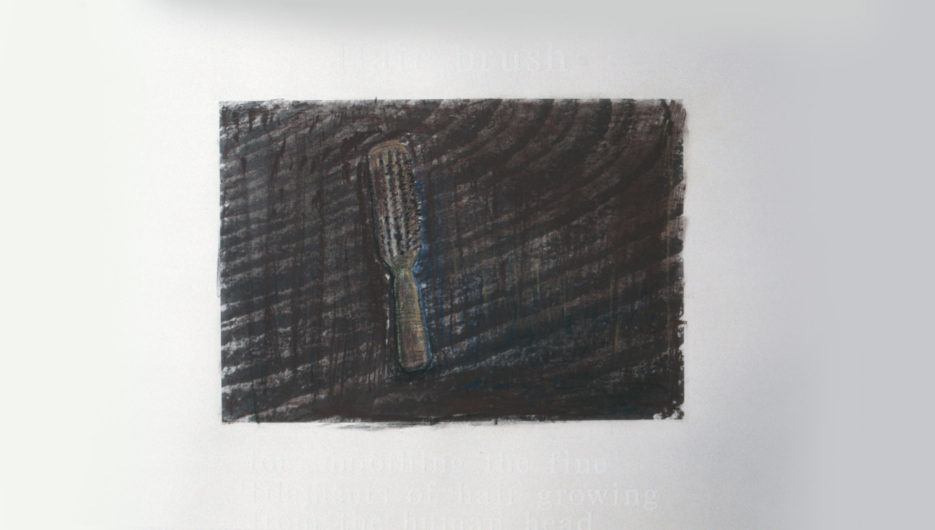

Categorised in: All works, In footer
This post was written by Alex Fettling